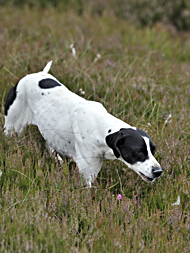
| HOME |
| PROJECT DETAILS |
| PROJECT ADMINSTRATION |
| PUBLICATIONS |
| JOINT RAPTOR STUDY |
| THE MOOR |
| THE GROUSE |
| THE RAPTORS |
| OTHER WILDLIFE |
| DIVERSIONARY FEEDING |
| GAMEKEEPING |
| WILDLIFE SURVEYS |
| NEWS |
| CONTACT |
| PHOTO GALLERY |
| WILDLIFE SURVEYS |
Each season field research staff carry out repeated surveys of the wildlife to record any changes in abundance. Many of these surveys were established in 1992 at the beginning of the Joint Raptor Study. Some signifcant changes have already been documented following the rise and fall of the breeding hen harriers and cessation of gamekeeping in 1999. Research staff use well established techniques so that the information is not only comparable from one year to the next but with other moorland areas. Hen harriers. The harriers generally don't winter on the moor but the males turn up in March onwards attracting females with aerial displays. Harriers nest on the ground, generally in tall heather. The numbers of breeding birds is determined by watching from vantage points in early spring. Each nest is watched and visited at intervals to count the number of young harrier chicks that fledge. Throughout this time the female harriers are provided with dead mice and poultry chicks to discourage them from preying on grouse. Grouse. Although grouse are large and quite prominent birds, they are often inconspicuous in the long heather. For this reason grouse are only counted on established survey plots of 50 hectares each. There are 15 plots over the whole moor. The grouse are counted in spring to assess the breeding stock and in late summer to assess production. Pointer dogs are used to find the grouse in the long heather. Waders and songbirds. Waders and songbirds are counted each spring on 15 sample plots across the moor. Counts are of all birds seen along transect walks that take place early in the morning between 6-9 a.m. The method is based on other standard bird counts developed by the British Trust for Ornithology.
|
